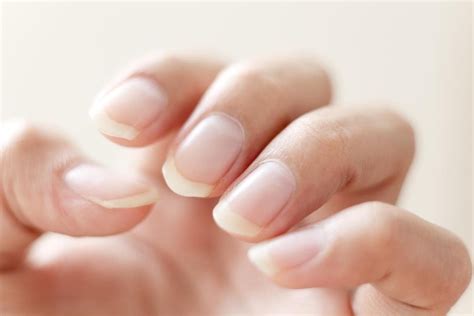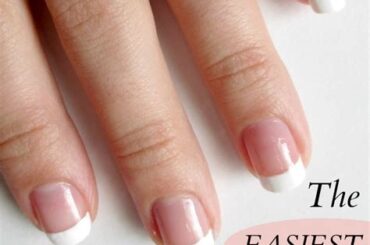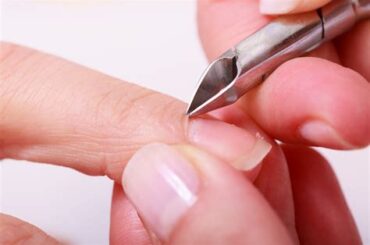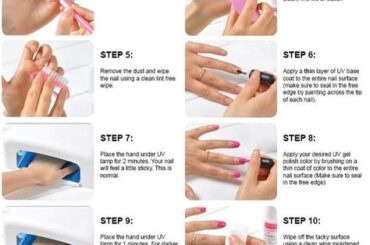Explore the nail growth cycle, factors and myths affecting growth, nutrition, health conditions, and natural remedies for stronger nails with professional care tips.
Anatomy of the Nail
Understanding the anatomy of the nail is essential for maintaining healthy nail growth. The nail is made up of several parts, including the nail plate, the nail bed, the cuticle, and the nail matrix. The nail plate is the hard, protective layer that we see on the surface of our nails, while the nail bed is the skin underneath the nail plate. The cuticle is the thin layer of skin that surrounds the base of the nail, and the nail matrix is the area where the nail begins to grow from.
Each part of the nail plays a crucial role in its growth and overall health. The nail plate provides protection, the nail bed nourishes the nail, the cuticle acts as a barrier to prevent infection, and the nail matrix is responsible for producing new cells for nail growth.
Understanding the anatomy of the nail can help in identifying any potential issues or abnormalities that may arise. By keeping the nail plate, bed, cuticle, and matrix healthy, you can promote strong and healthy nail growth.
Understanding Nail Growth Cycle
Understanding the nail growth cycle is essential for maintaining healthy and strong nails. The nail growth cycle consists of four stages: the anagen phase, the catagen phase, the telogen phase, and the exogen phase. During the anagen phase, the nail cells in the matrix actively divide and produce new nail cells, leading to nail growth. This phase typically lasts for 3-5 months, depending on factors such as age, genetics, and overall health.
Following the anagen phase, the nail enters the catagen phase, where the production of new nail cells slows down and the nail begins to detach from the nail bed. This phase lasts for about 1-2 weeks. Next, the nail enters the telogen phase, during which the nail is at rest and no growth occurs. This phase lasts for 3-4 months, and it is normal to shed a certain amount of nails during this time.
Finally, the nail enters the exogen phase, where old nails shed and new nails begin to grow. It is important to understand the nail growth cycle to know what is normal and what may indicate an underlying health issue. By paying attention to the stages of the nail growth cycle, it is possible to identify any irregularities and take steps to improve nail
Factors Affecting Nail Growth
The Science of Nail Growth: What You Need to Know
Nail growth is a complex process that can be affected by a variety of factors. One of the most important factors affecting nail growth is overall health. If you are not getting the necessary nutrients and hydration, your nails may become weak and brittle, leading to slower growth. Additionally, genetics play a significant role in determining the rate at which your nails grow. Some individuals may naturally have faster nail growth, while others may experience slower growth due to their genetic makeup.
Another factor that can affect nail growth is age. As we age, our nail growth rate may slow down, and our nails may become more prone to damage and breakage. Additionally, stress can also impact nail growth. High levels of stress can disrupt the body’s natural processes, including nail growth, leading to slower growth and weaker nails. Furthermore, underlying health conditions such as thyroid disorders or malnutrition can also affect nail growth and overall nail health.
Lastly, external factors such as frequent exposure to harsh chemicals, improper nail care practices, and trauma to the nails can all impede nail growth. It is important to be mindful of these factors and take steps to promote healthy nail growth, such as maintaining a balanced diet, managing stress levels, and protecting the nails from potentially damaging external influences.
Nutrition and Nail Health
Proper nutrition is essential for maintaining healthy and strong nails. A diet rich in essential nutrients such as protein, vitamins, and minerals is crucial for promoting nail health. Protein is the building block of nails, so including adequate amounts of lean meats, fish, eggs, and dairy products in your diet is important for nail growth and strength.
In addition to protein, vitamins such as vitamin E and biotin are essential for promoting nail health. Vitamin E helps to protect the nails from damage and keep them hydrated, while biotin is known for promoting nail growth and preventing brittleness. Foods rich in these vitamins include almonds, spinach, sweet potatoes, and whole grains.
Furthermore, minerals like zinc and iron play a significant role in maintaining healthy nails. Zinc helps the body produce new cells, including those that make up the nails, while iron deficiency can lead to brittle nails and slow growth. Incorporating foods such as nuts, seeds, lean meats, and leafy greens can help ensure that you are getting an adequate intake of these essential minerals for nail health.
Tips for Faster Nail Growth
Are you tired of waiting for your nails to grow? Do you find yourself wishing for longer, stronger nails? Well, you’re not alone. Many people struggle with slow nail growth, but fear not! There are some tips and tricks that can help speed up the growth process.
First and foremost, it’s important to maintain a healthy diet. Consuming foods rich in protein, biotin, and vitamins such as A, B, and E can promote nail growth. Protein is essential for nail strength, biotin helps improve nail health, and vitamins nourish the nails and surrounding tissues.
Furthermore, keeping your nails well-moisturized can also help accelerate growth. Using a cuticle oil or moisturizing nail cream can prevent breakage and chipping, allowing your nails to grow longer without the risk of damage. Additionally, gentle nail care is crucial. Avoiding harsh chemicals and rough nail treatments can keep your nails healthy and encourage faster growth.
Common Nail Growth Myths
Common Nail Growth Myths
There are several myths surrounding the growth of nails. One of the most common myths is that cutting your nails will make them grow faster. However, this is not true. Nail growth actually occurs at the base of the nail, so cutting the tip has no impact on the rate of growth.
Another myth is that nails can be strengthened by applying nail polish or using nail hardeners. While these products may temporarily improve the appearance of the nails, they do not actually affect the growth or strength of the nails in the long run. Nail strength is primarily determined by genetics and overall health.
One of the most persistent myths is that gel manicures can damage the nails and inhibit growth. While gel manicures may weaken the nails temporarily, there is no evidence to suggest that they permanently impact the nail growth cycle. It’s important to separate fact from fiction when it comes to nail care to ensure that you are taking the best possible care of your nails.
Health Conditions Affecting Nail Growth
Nail health can be influenced by a variety of factors, including health conditions. Many health conditions can affect the growth and appearance of nails, so it’s important to be aware of these potential impacts. For example, conditions such as psoriasis and eczema can cause nails to become brittle, discolored, or pitted. Diabetes can also have an impact on nail health, leading to changes in the shape and texture of the nails. Additionally, thyroid disorders, such as hypothyroidism, can result in slow nail growth and brittleness.
Furthermore, fungal infections are a common health condition that can negatively affect nail growth. Fungal infections can cause the nails to become thickened, discolored, and brittle, and may even lead to separation of the nail from the nail bed. On the other hand, iron deficiency anemia can lead to spoon-shaped nails and slowed growth. It’s important to monitor any changes in the appearance or texture of nails, as they can be indicative of underlying health conditions.
Overall, it’s essential to be mindful of the potential impact of health conditions on nail growth. Seeking prompt medical attention for any significant changes in nail health can help identify and address any underlying health issues that may be affecting the nails. By understanding the potential effects of health conditions on nail growth, individuals can take proactive steps to maintain overall nail health.
Natural Remedies for Strong Nails
One of the most popular methods for promoting strong nails is to use natural remedies. Many people prefer these alternatives to chemical-laden products because they are often gentler on the nails and cuticles. One effective natural remedy for promoting strong nails is coconut oil. Coconut oil is high in saturated fats, which can help to moisturize and strengthen the nails. Simply massage a small amount of coconut oil into the nails and cuticles on a regular basis to see noticeable improvements in nail strength and health.
Another natural remedy for strong nails is biotin. Biotin, also known as vitamin H, is a B-complex vitamin that has been shown to support healthy nails. It can be found in foods such as eggs, almonds, and sweet potatoes, but many people opt to take biotin supplements for an extra boost. Incorporating biotin-rich foods into your diet can help improve the strength and resilience of your nails over time.
Additionally, using olive oil is a simple and effective way to promote strong, healthy nails. Like coconut oil, olive oil is rich in fatty acids and antioxidants that can help strengthen and protect the nails. To use olive oil as a natural nail remedy, simply warm a small amount of the oil and massage it into your nails and cuticles before bedtime. This can help keep your nails hydrated and improve their overall strength and appearance.
Professional Nail Care Advice
When it comes to maintaining healthy and strong nails, seeking professional advice is essential. Nails, just like any other part of the body, require regular care and attention to ensure they stay in top condition. Whether you visit a professional nail technician or a dermatologist, getting expert support can make a significant difference in the health and appearance of your nails.
Professional nail care advice often includes tips on proper nail hygiene, choosing the right nail products, and identifying any potential issues that may be affecting your nail health. Additionally, experts can provide personalized recommendations based on your specific nail type and condition, helping you develop a tailored nail care routine that meets your needs.
By seeking professional nail care advice, individuals can benefit from the knowledge and experience of experts in the field, ultimately leading to healthier, stronger nails that look and feel great. So, whether you are dealing with brittle nails, nail fungus, or simply want to improve the overall appearance of your nails, turning to a professional for guidance can be a game-changer in your nail care journey.
Frequently Asked Questions
How fast do nails grow?
Nails typically grow at a rate of about 1/8 inch per month, or 3 millimeters.
What factors affect nail growth?
Several factors, including age, genetics, overall health, and even the season, can affect the rate of nail growth.
Can diet and nutrition impact nail growth?
Yes, a balanced diet including protein, biotin, and other vitamins and minerals can promote healthy nail growth.
Are there any myths about nail growth?
One common myth is that nails continue to grow after death, but in reality, the skin around the nails retracts, giving the appearance of longer nails.
How can I promote healthy nail growth?
In addition to a healthy diet, proper nail care, avoiding harsh chemicals, and keeping nails well-moisturized can all contribute to healthy nail growth.
What can slow down nail growth?
Factors such as aging, poor circulation, certain medications, and nail trauma can all slow down the rate of nail growth.
Are there any medical conditions that affect nail growth?
Yes, conditions such as thyroid disorders, anemia, and psoriasis can all impact the health and growth of nails.





